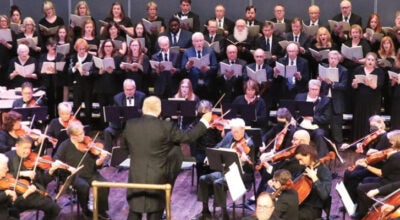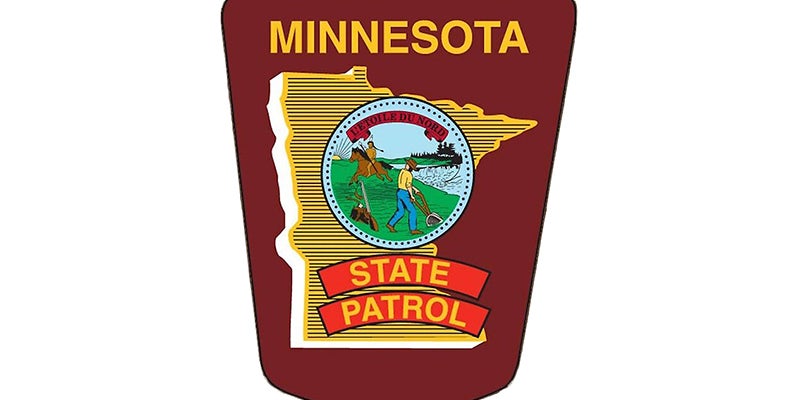Al Batt: Waving from the open road
Published 6:13 pm Tuesday, January 30, 2024
|
Getting your Trinity Audio player ready...
|
Echoes From the Loafers’ Club Meeting
What’s the name of that guy who was a mnemonist whose elephantine ability to remember large amounts of information caused him to be called the “Yoda of Memory Training,” who coauthored “The Memory Book” with the basketball star Jerry Lucas and performed incredible memory demonstrations on the “Tonight Show” with Johnny Carson?
Harry Lorayne.
That’s it! I can never remember his name.
Driving by Bruce’s drive
I have a wonderful neighbor named Bruce. Whenever I pass his drive, thoughts occur to me. How old were the big kids when you were growing up? I remember the big kids were quick to banish those strings (phloem bundles) that emerge when peeling a banana. Those strands are perfectly edible and surprisingly nutritious, as they’re packed full of potassium, fiber, vitamin A and vitamin B6. That shows us how little those big kids knew.
Soon to be the subject of a Ken Burns documentary
It was warm enough I was wearing a shacket. I waved at every driver I met. I didn’t do the customary raised forefinger wave; I let them have a full four-finger acknowledgment, with only the thumb maintaining a grip on the steering wheel. Fellow lovers of the open road waved back. I pretended I was wearing a badge designating me as the County Ambassador of the Heralding Congenial Gesture. It was a large badge. It’s a volunteer position unless a grant can be found. My father thought waving demonstrated common decency.
I’ve learned
I was shocked to learn that I’m a terrible electrician.
Laughter is the best medicine unless you have diarrhea.
It’s hard to find a chew toy for a chicken.
The perfect name for a snowman this winter is Meltin’ John.
Nature notes
I watched a fox squirrel carrying an ear of corn excavated from the snow in the middle of what had been a large cornfield. There were no trees and only a few utility poles where a hunting hawk might perch. Not much later, I spotted a red fox carrying what appeared to be a cottontail rabbit. Red and gray foxes are similar in appearance. Gray foxes have black-tipped tails and red fox tails are tipped in white. The red fox is an opportunist that eats many other things besides rabbits: rats, mice, ground squirrels, birds, snakes, fish, insects, turtles, frogs, berries, fruits, nuts and seeds. Red foxes hunt primarily at night and hide uneaten food under litter or bury it to be eaten later.
I slowed to a crawl as 16 wild turkeys walked and flew in front of my car. They traveled across four lanes of traffic. In the fall, turkeys segregate into groups—young males (jakes) in one group, adult males (toms) in another and females in a third. Jake groups tend to hang out close to hen flocks. It seems I see more squabbles among the jakes than with the toms or hens. The young birds are trying to find their places in the pecking order. The groups dissolve in the spring. Turkeys survive the winter by feeding on mosses, buds, seeds, fern spores, acorns, scattered corn left after the harvest, and seeds found beneath birdfeeders and in manure piles. Other than an adequate supply of food, they need a safe place to roost in the winter. They try to roost in trees offering thermal protection—pine or oak trees. If they have fed well, they can take the bitter cold. They struggle in deep, powdery snow, which makes foraging for food and escaping predators challenging. They can scratch through 6 inches of fluffy snow and a foot of packed snow. When the ground is covered with powdery snow, flocks congregate in stands of pine and other softwoods, trees that hold snow in the canopy, leaving less on the ground for the turkeys to contend with.
The snood is the fleshy flap of skin that hangs off a turkey’s beak. The wattle is a fleshy flap of skin under the turkey’s chin. Some people call it a dewlap. A male turkey has a beard that hangs from its chest. It’s made of coarse, rough feathers. A beard is 3-4 inches long on a young male and can grow to 10 inches or longer on a turkey at least 3 years old. A small percentage (10-20%) of female turkeys have beards. Male turkeys have sharp spurs on the back of their legs that they use when fighting with other turkeys. Caruncles are bumpy patches on a turkey’s neck. The caruncles may play a role in attracting a mate.
Meeting adjourned
Provide an upgrade to someone’s day. Be kind.




